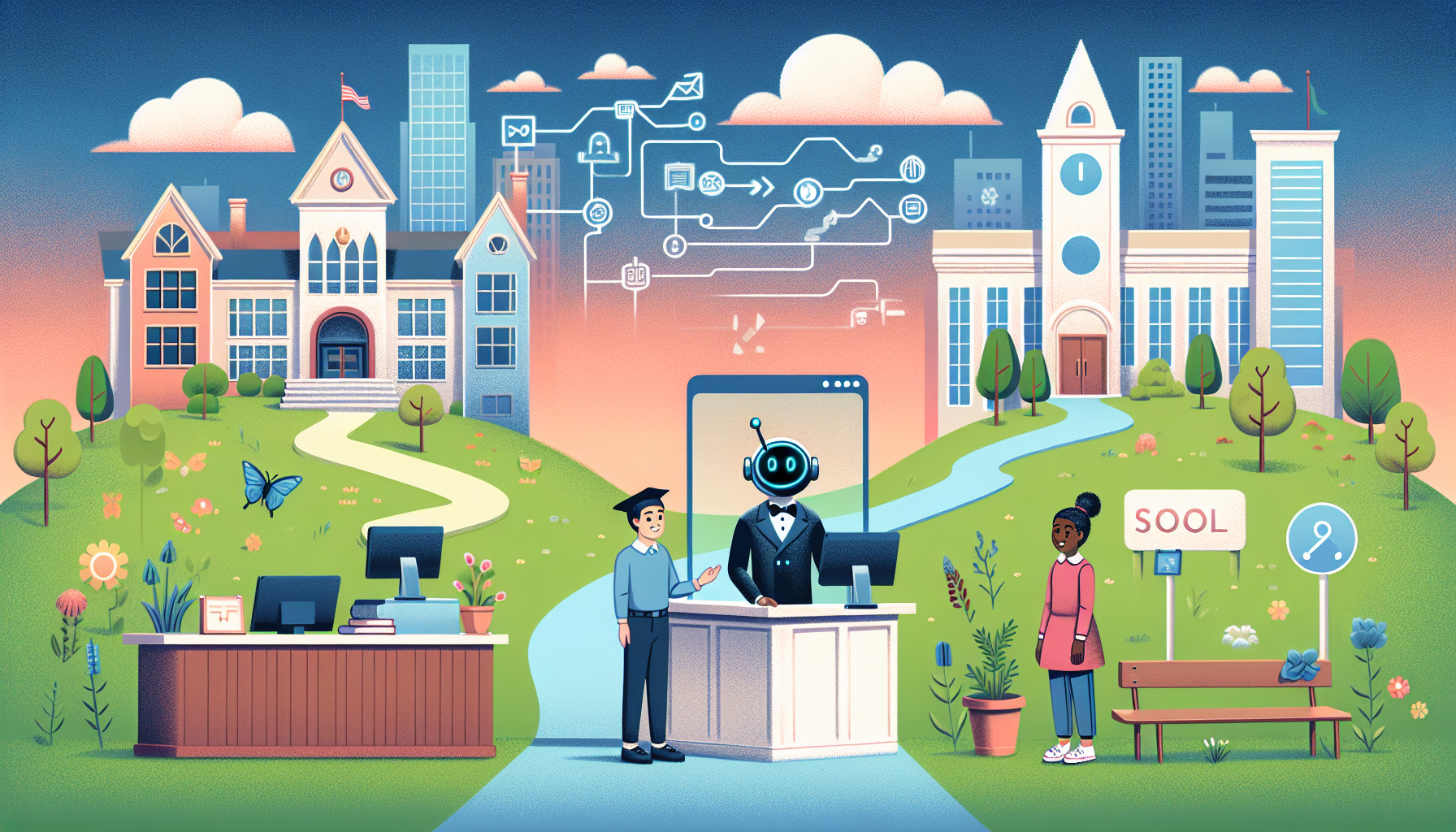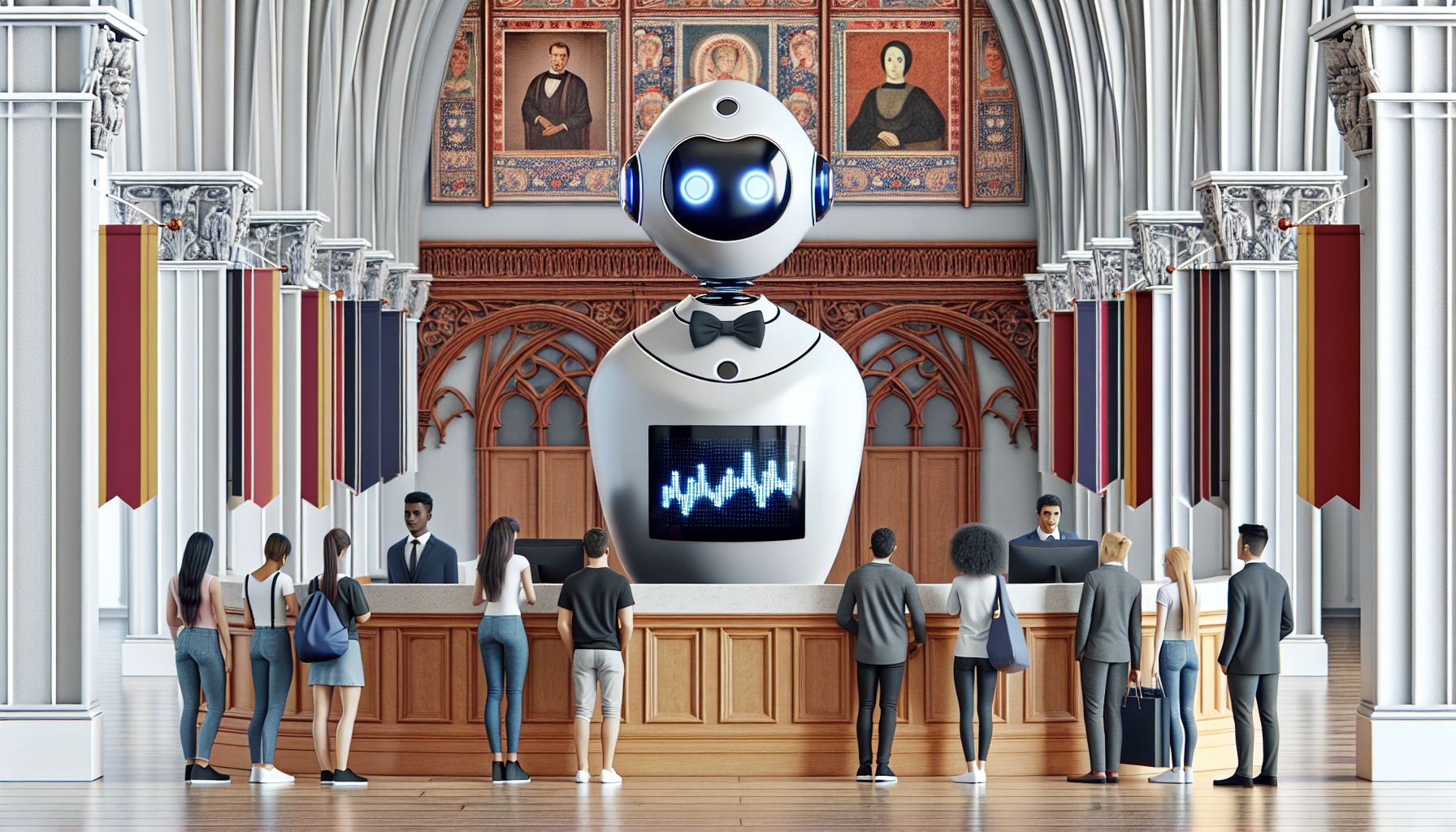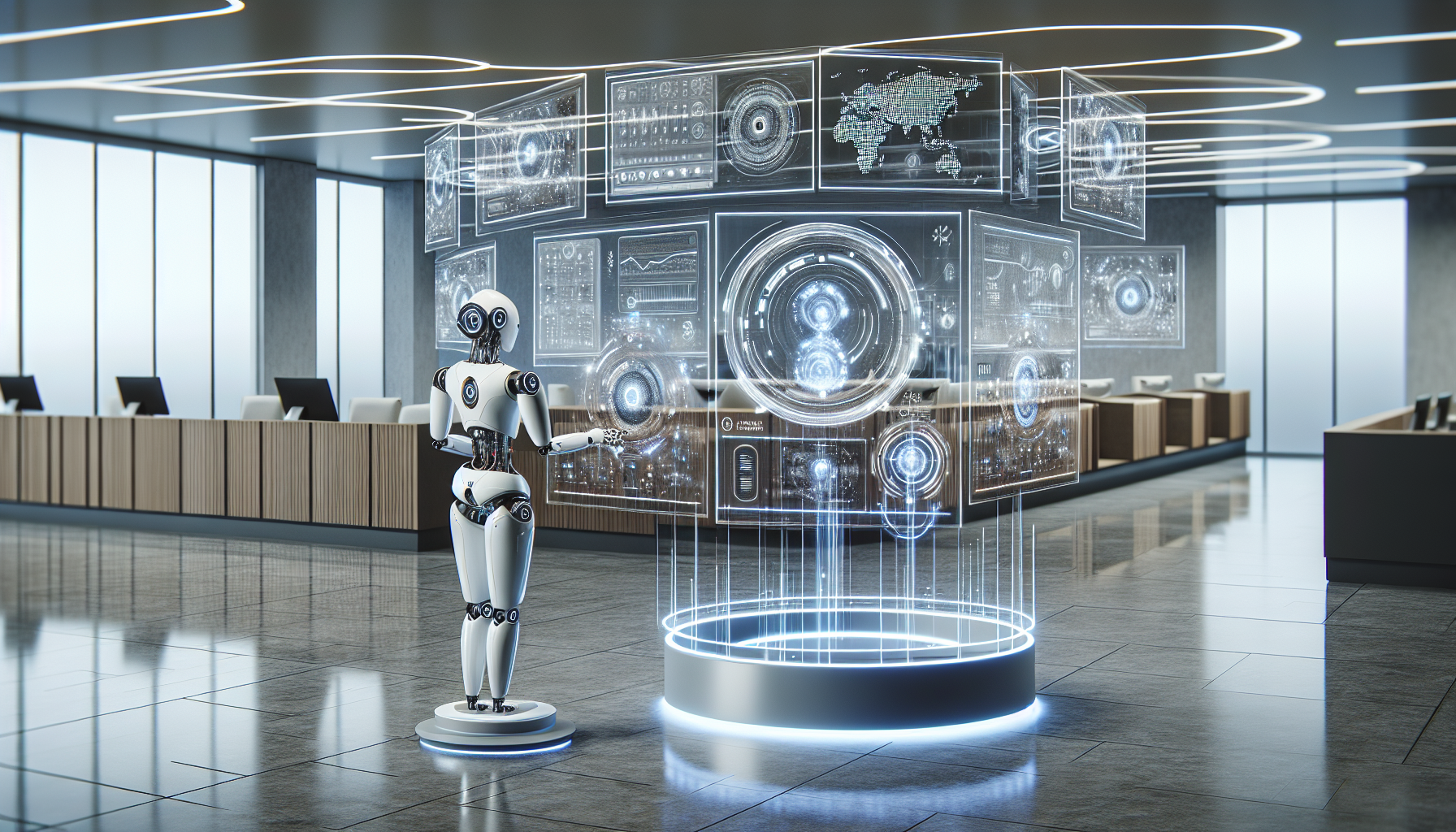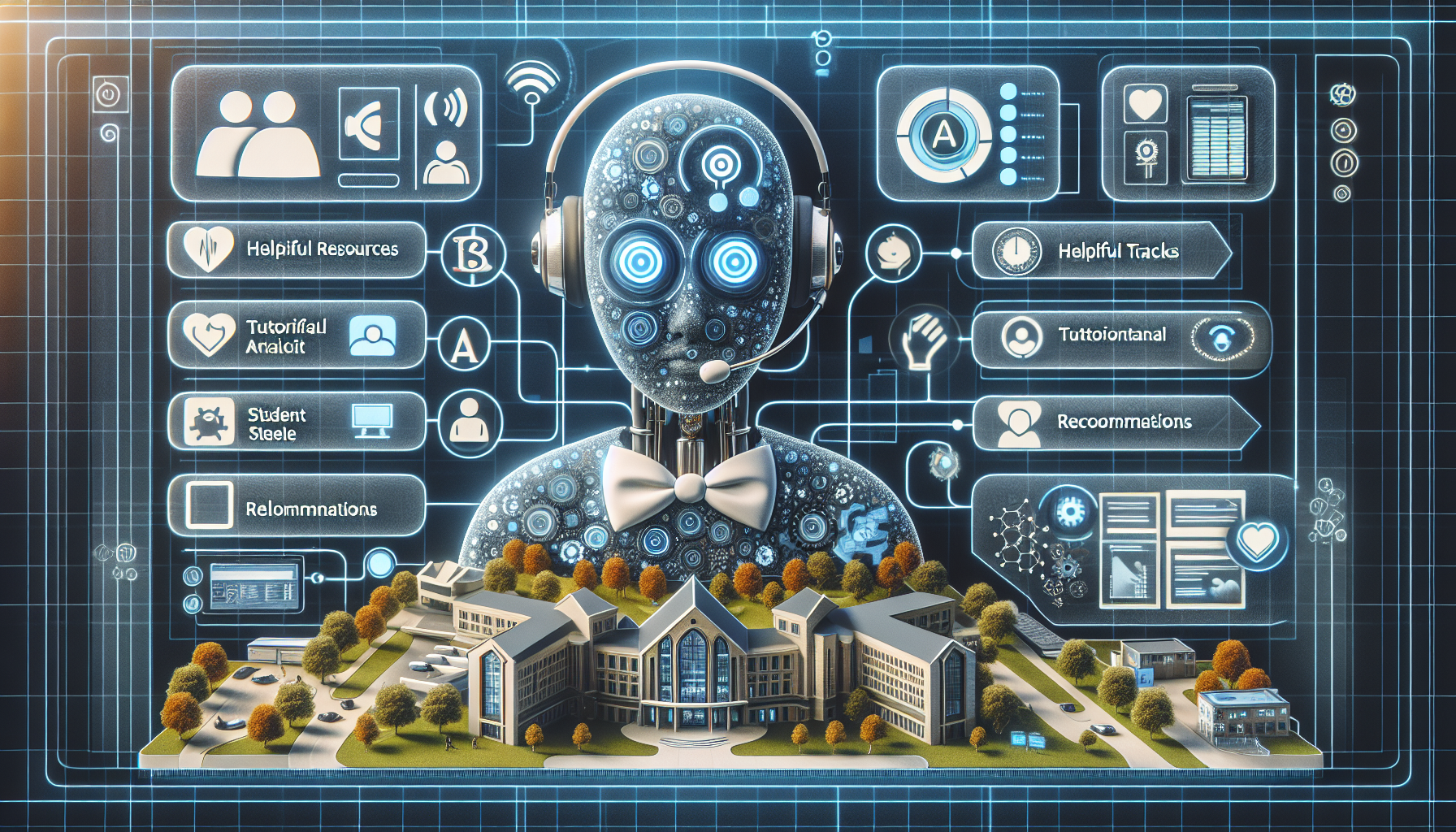
Welcome to the future of the education sector, where AI receptionists are promoting seamless management and operations. The world we inhabit today thrives on advanced technologies, and Artificial Intelligence is in the driving seat, revolutionizing every sector, including education. The integration of AI receptionist systems, such as AI chatbots and virtual assistants, has brought a radical transformation, offering a new landscape to schools and universities. These advanced systems are replacing traditional human-operated reception desks, providing technological prowess and efficiency in communication. For more on the rise of AI, visit here.

The key driving force behind the adoption of AI receptionists lies in their ability to handle a wide range of tasks, from answering general questions about campus operations to scheduling appointments with faculty members, and even guiding prospective students on virtual tours. They are not just cost-efficient; they are the epitome of convenience and practicality in a modern educational setting. Furthermore, they have the capability to work round-the-clock, ensuring the smooth running of administrative tasks in these institutions. Find out more about how AI is supporting office tasks here.
The arrival of AI receptionists is indeed a sign of progression in the education sector. This innovation has caused a shift in paradigm, integrating technological advancement into the very backbone of institutional infrastructure. While manual operations may never become completely redundant, AI receptionists are significantly routing the path to a more streamlined and efficient educational system.
In an era of heightened technological advancements, educational institutions must not be left behind. One innovation providing a significant transformation in the sector today is the adoption of AI receptionists in schools and universities. These tools, driven by Artificial Intelligence, offer a myriad of benefits that foster increased efficiency and growth in the education sector.
The first remarkable benefit of these chatbot receptionists is their 24/7 availability. Unlike human receptionists, AI receptionists never close shop. They are available round the clock to interact with students, parents, or staff, answering questions and providing assistance. This ensures there is no gap in communication, thus fostering smooth running and excellent customer service in the institutions.
Moreover, AI receptionists are proficient in handling simultaneous requests. They hold the capacity to manage multiple conversations and tasks simultaneously, reducing wait times and ensuring queries are addressed promptly. Human receptionists might be overwhelmed by a large volume of inquiries, but with AI receptionists, the number is just a number.
Another major advantage that cannot be overlooked is the automated scheduling feature that AI receptionists offer. They are equipped with software that allows them to manage schedules, arrange appointments, and send reminders, significantly easing administrative tasks for education providers. This precision and consistency in managing schedules boost efficiency and ultimately enhance the productivity of these institutions.
The implementation of AI receptionists in educational settings is, therefore, not only a sign of technological advancement, but a strategic move designed to optimize operations and improve overall efficiency. Institutions should thus embrace this innovation for an improved educational experience.
Education institutions are increasingly exploring innovative technological solutions, such as Artificial Intelligence (AI) to manage administrative tasks efficiently. Among these solutions, AI receptionists have emerged as a promising tool to optimize tasks like scheduling, reminders, or finding information. Despite the potential benefits, schools and universities should carefully consider several challenges in implementing this technology.

First and foremost, privacy concerns are a key consideration. AI receptionists will handle sensitive data, which could present potential data breaches that could harm students' and staff's rights to privacy. It's therefore crucial to ensure principles of data minimization, purpose limitation, and consent are adhered to when designing and using such systems.
Integration with existing systems is another hurdle. An AI receptionist needs to be compatible with the school's current infrastructure, as well as integrated with various databases and applications. Failure to properly align with existing systems may result in inefficient operations and miscommunication.
The final key challenge in implementing an AI receptionist is the training required for staff. While the purpose of AI is to automate tasks, human interaction and supervision are needed to ensure its effective operation. Staff should be properly trained not only on how to use the technology, but also on troubleshooting and understanding AI outputs. Investment in professional training service providers might be required to supplement in-house training efforts.
In conclusion, while the AI receptionist technology holds promise for education institutions, careful consideration and planning are needed to ensure a successful implementation. Attention to data privacy, system integration, and staff training will be integral to this process.
Education institutions are continually evolving, seeking new ways to streamline operations and enhance student experiences. In recent years, several institutions have turned to AI receptionist systems to handle front desk tasks, demonstrating impressive results. Here are few case studies that highlight both the practical applications and outcomes of these systems.
Carnegie Mellon University introduced an AI receptionist named Emily in 2018. Emily manages routine inquiries about admissions, campus directions, and upcoming events. This has reportedly reduced the workload of the human staff and improved overall front desk efficiency. Emily learns from every interaction, becoming more equipped to handle complex queries over time.
At Montgomery Bell Academy in Nashville, their AI receptionist, Sam, has been a game-changer in managing school communication. By handling regular calls and messages, Sam frees up human staff for more substantive tasks. With its machine learning capabilities, Sam has progressively improved its interaction with parents, students, and visitors, enhancing the overall communication process.
By the same token, University College London has adopted an AI receptionist system for more effective student engagement. The system assists students with academic inquiries, updating them about lecture schedules, deadlines, and course material availability. This move toward AI reception has resulted in more efficient time management and increased student satisfaction.
These case studies illustrate the considerable benefits of marketing AI Receptionists to schools and universities. Through leveraging advanced technology, educational institutions can increase efficiency, improve communication, and ultimately enhance the student experience.
The emerging field of AI receptionists presents significant opportunities to revolutionize the education sector. Moving ahead, we can anticipate a multitude of innovative features on the horizon that could bring about ground-breaking changes in schools and universities.

Perhaps the most exciting of these developments relates to personalized learning pathways. Harnessing AI capabilities in data analysis, AI receptionists could be designed to assess student performance continually, creating customized schedules and resources based on individual learning speed and style. This would not only revolutionize student support services but could also drastically improve students' learning experiences.
Another transformative development includes the integration of multilingual support to the AI receptionist features. Especially in diverse educational environments, language barriers can often inhibit students' and parents' ability to access information and resources seamlessly. Offering support in multiple languages can thus substantially improve user satisfaction and outreach.
There is also the potential to integrate interactive learning modules into the AI receptionist’s functionality. This feature could find a multitude of instructional uses, ranging from helping students understand complex theories to facilitating faculty in learning new software or administrative processes.
Lastly, the implementation of AI receptionists could lead to significant cost-saving measures for educational institutions by automating tasks traditionally done by human staff. Over time, this may result in more financially sustainable operations and allow for the better allocation of resources towards improving the core aspects of education.
While these are indeed exciting times for the incorporation of AI technology within the education sector, it is important to be cautious and considerate in its implementation. The potential of AI should be harnessed not to replace, but to complement and enhance the human touch intrinsic to teaching and learning. Truly successful integration of AI will continue to make education more personalized, accessible, and efficient.
Start your free trial for My AI Front Desk today, it takes minutes to setup!








